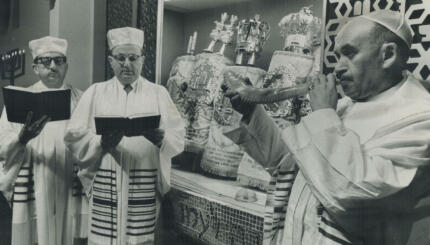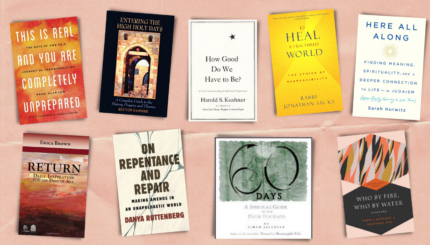When I entered rabbinical school, I never imagined I would become a rabbi of an online synagogue. In fact, when I started at the Hebrew Union College in 2003, Facebook and Twitter did not yet exist. I blogged during the year I was living in Israel so that my family and friends could see my photos, but even that was pretty uncommon. And while I sometimes spoke to my family using a microphone plugged into my computer, the idea of video-chat didn’t even cross my mind.
Fast forward to 2008. I was being ordained a rabbi and had been working for two years as an intern in an independent congregation, Beth Adam in Cincinnati, Ohio. Congregation Beth Adam came into existence in 1981 and has been known since then as an outside-the-box, evolving, intentional, and thoughtful congregation. Though the congregation only had a few hundred members, its vision statement, re-written in 2006, said that Beth Adam aspired to be “a worldwide Jewish and humanistic resource.”
How could a small congregation in the Midwest be a worldwide resource? The answer was obvious in 2008: by using technology. After surveying lots of demographic research and hosting focus groups, Beth Adam made the bold move to launch an online congregation. At the time, there were very few models for this. But, we knew that times were changing and we needed to create a new access point for Jewish engagement.
So, seven years ago on Rosh Hashanah we launched our online community and a few hundred people participated in that first service. Now, tens of thousands of people join in our High Holidays each year. It is touching to see Jews from around the world sharing their holiday experience.
While other synagogues have started to stream, we are much more than a congregation that streams. Our liturgy is original, reflecting our humanistic voice. And, while our High Holidays are streamed from our bricks-and-mortar sanctuary, our Shabbats are informal chats just for the online community. Our Yom Kippur memorial service includes photos of those being remembered, submitted by our participants. We are open 24/7/365 and offer podcasts, blogs, educational materials, ecards, recipes, discussion boards, and more. We even host “cyber-onegs” after services where people in Cincinnati chat with the people watching online, who often chat among themselves during the entire service. We are happy to serve as rabbis for our online participants. Though I could not have imagined any of this ten years ago, I see how essential it is as part of the ongoing evolution of the Jewish experience.
Many people ask me if an online congregation is somehow less (less good? less real? less meaningful?) than a traditional congregation. My answer is that neither is inherently better than the other. Some will always prefer in-real-life interaction and others will prefer online interaction. Providing diverse options allows people to choose what works best for them. And, what I am sure of is that the words of our participants speak for themselves:
“Today, after finding your website, is the first time since my Bat Mitzvah that I have been excited about being Jewish. My Bat Mitzvah was about 35 years ago.”
“Even as you open your doors to the world, you make us feel personally invited and connected.”
“Whether we connect hearts, hopes and dreams with people face to face in a synagogue or through an internet connection, the people are real and the community becomes real.”
If you’d like to join us for the High Holidays, you can learn more at OurJewishCommunity.org. Wishing you all a sweet New Year!
Rosh Hashanah
Pronounced: roshe hah-SHAH-nah, also roshe ha-shah-NAH, Origin: Hebrew, the Jewish new year.



